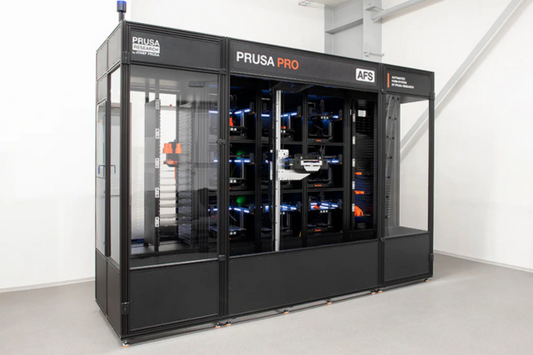In the future, "bitrate" is everything.
So, here's my hypothesis:

It might sound odd at first, so bear with me—I’ll explain.
In computing, bitrate measures how much data can flow through a system in a given time. It's the pulse of digital communication - the speed at which information moves from one point to another. Traditionally you may associate the term bitrate with audio and video. But I believe bitrate is much more than that.
The Bitrate Explosion
We’re in some pretty wild times right now. There's been an explosion in our capacity to learn, create and share both physically and digitally. AI can now process and generate information at speeds that would have seemed impossible just a short couple of years ago. And in the coming years, this will likely spill over into the physical world as AI, digital fabrication and robotics collide and seep into the mainstream.
Some may argue this is already happening...
I'm certainly not the first to express this concept. When Elon Musk talks about Neuralink increasing the "bitrate" of human-computer interaction, he's alluding to the speed and fidelity with which we can translate thoughts into action and how crucial this will be going forward.
In his example, he mentions how entering text in your smartphone is a low bitrate way of communicating with the device but with Neuralink, through your thoughts alone you could one day "type" an entire sentence instantly thus increasing the speed with which you communicate instructions to the device. This same concept can be re-applied to any number of new technologies.
Some practical examples of this:
- Design a product in CAD once then 3D print it multiple times on multiple printers simultaneously
- Write a long blog post once then have an AI recreate 7 different length versions in 7 different languages for different audiences.
- Write a company policy once then have an Agent use this as the basis of thousands of customer service queries
Anytime we can automate the transfer of information, we can increase our bitrate.
Why This Company and Blog Exists
The purpose of the Bitrate is to explore and document the tools and skills required to increase your human bitrate.
In the physical world, I've always been fascinated by digital fabrication and how accessible it has now become to everyday folks at home. In the past, if you walked around the average home workshop, you'd see the usual set of hand and power tools. Nowadays, it's not uncommon to see 3D printers, Laser cutters, CNC routers, Arduinos and Raspberry Pis.
The quality and complexity of what can now be made at home is actually astonishing. The combination of these tools can form the basics of an entire DIY robotics lab, right in your home.
If we step it up a notch and look at professional machines, we can start to see what is about to trickle down into our homes. For example, check out this Prusa Pro AFS print farm.
The combination of multiple 3d printers and a robotic arm creates a completely automated manufacturing system capable of handling an entire production queue of jobs, all in a single box. However, Prusa calls this "Pro" and at NZD87,000 it's got a price tag to match.
But what if I don't have that kinda dosh lying around? Increasingly, the components required to make our own versions of these types of machines are becoming somewhat accessible to everyday punters like you and me.
In the video below, 3d printing, Arduino, a bit of coding and some simple electronics are combined to create a DIY robotic arm. I'll admit, this one is relatively rudimentary and unlikely to be anything more than a learning exercise. However, there are already DIY makers out there creating far more polished versions AND programming them to actually do tasks for them.
Ok, robots are cool 'n' all but what about AI?
On the software side, I've been experimenting with AI for some time now.
Most people have at least had a play with an AI chatbot like ChatGPT. But I would guess that fewer have gone beyond to tinker with the APIs, RAG, hosting models locally, tool calling and agentic workflows. These are some of the skills required if you truly want to get AI to do work for you and increase your total output.

For example, imagine you run a small consultancy business. After each client meeting, an AI agent kicks in:
It summarizes the discussion, taps into your company's private knowledge base for similar past projects, drafts follow-up tasks, slots them into your schedule based on availability and deadlines, and preps document templates—all before you’ve even left the room.
This isn’t just chatting with a chatbot for information, it’s building a system that can be another set of hands and actually do real work for you.
Timing Is Everything
Every tech breakthrough follows a pattern: lab demos, pricey enterprise grade products, scrappy open-source hacks to mimic enterprise products, then polished user-friendly consumer products.
The sweet spot is when a tool is accessible but not yet truly mainstream. I believe that if we up our technical skills, we can take advantage of these systems in that sweet spot before the edge has disappeared.
The Plan
Through this blog, we’ll explore that sweet spot. We'll learn about digital and physical tools, experimenting, failing (a lot), and building practical skills along the way.
My goal? To equip you to navigate a world where maximising your human-machine bitrate matters.









